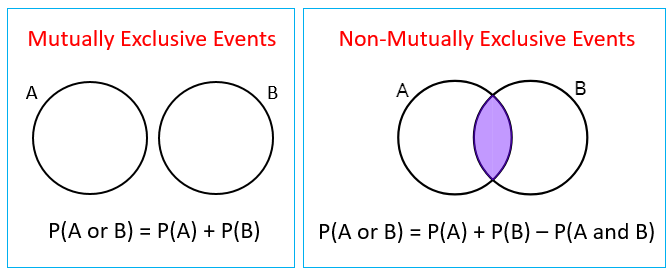Flexibility Assessment:
Thanks to everyone for participating in the pilot Flexibility Assessment from Harvard Graduate School of Education. Your feedback will help to revise this assessment. This study will be carried out in Finland, Sweden, Spain, America, and China.
It’s interesting to see that most of the students in this class solved the problems in a traditional way in Part I, but developed better (more innovative) methods in Part II for the same set of problems. Perhaps because of the time constraint, or being used to the more traditional ways. We learned that for some problems, there are some “innovative strategies”. Be familiar with the properties and principles in math, you can solve problems faster, and better:)
Lesson Review:
8.2 Probabilities and Addition
If events A and B are mutually exclusive, then P(A or B) = P(A) + P(B)
More generally, if A1, A2, …, An are mutually exclusive, then P(A1 or A2 or A3 … or An) = P(A1) + P(A2) + … + P(An)
If the events are not mutually exclusive, you have to correct for the overcounting:
P(A or B) = (P(A)+P(B)-P(A and B)
(think about the Venn Diagram)

8.3 Complementary Probabilities
P (A does not occur) = 1 – P(A occurs)
Sometimes it is easier to calculate the “opposite” events, so the complementary method can work better than the constructive method. (Refer to Example Problem 8.6)
Homework:
Page 128: 8.2.1-8.2.3, 8.2.6
Page 130: 8.3.1-8.3.4
Next week we are going to finish Chapters 8 and 9. Please be prepared and look forward to seeing you soon!
« Prev:SAT math Week 8: Constructing models SAT Math Week 9: Manipulating & Solving Equations:Next »